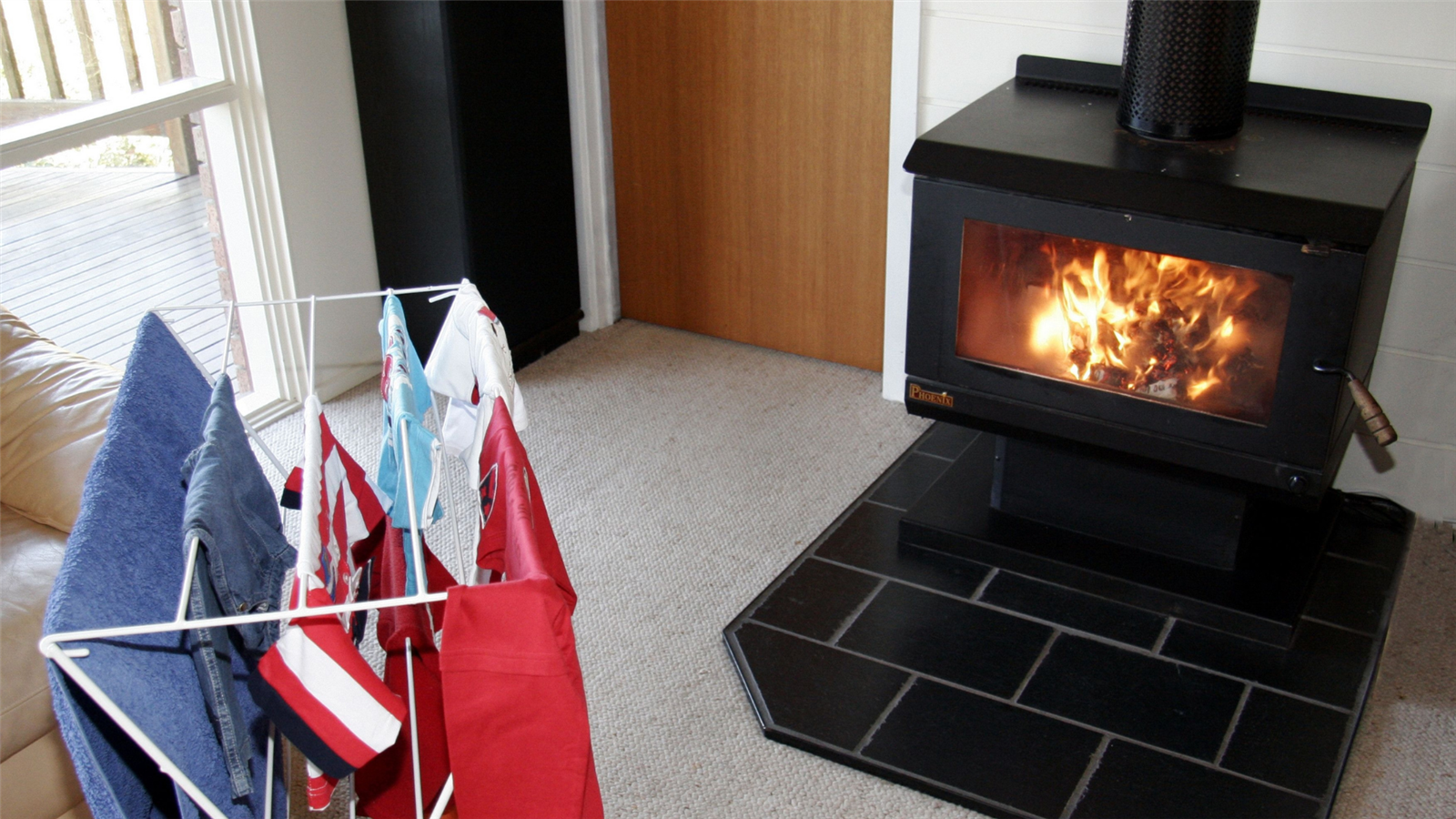
A wood heater fire that tore through the home of a Tatura family has Victoria's fire services calling for vigilance when warming homes this winter.
With the cooler weather arriving with force in recent weeks, one Tatura household had a lucky escape when bedlinen drying in front of a wood heater quickly became engulfed in flames.
The fire burned through blankets before hitting the floor and spreading into the living room.
Thankfully, the family was alerted to a fire in their home thanks to their newly installed smoke alarms.
Tatura Fire Brigade Captain and Incident Controller Peter Bevan hoped this common incident reminds residents to keep items drying at least one metre away from all heating sources.
"The family had only headed outside to the back shed for an hour before they heard the smoke alarms going off," Peter said.
"They couldn't see any smoke or flames until it started coming through the air conditioning swamp cooler on the roof, which is initially what they had thought caught fire.
"Once the clothes horse had fallen on the floor, the flames travelled right across the room into a cupboard where the switchboard was and then made its way up into the ceiling.
"There is extensive damage to the living area, and the curtains and carpets are all destroyed. The smoke managed to affect 80 per cent of the house.
"To set the scene more clearly for people, the radiant heat alone was so strong, it blew out a couple of the glass windows in the kitchen."
Fire Rescue Victoria (FRV) and CFA responded to more than 150 heater fires through May 2024 to March 2025, with sleeping and living areas the most common room of fire ignition for incidents that result in serious injuries or death.
CFA Chief Officer Jason Heffernan said this is just one example of how leaving portable heaters and fireplaces unattended can have distressing impacts in a matter of moments.
"We are so pleased the family had just installed working smoke alarms to alert them to safety. It is really important all households have them in every bedroom, hallway and living area to ensure you have enough time to safely evacuate," Jason said.
"It goes without saying, but please reconsider where you place your washing to dry. It's a popular set up to place them near our heaters and wood fires, but a mistake that can be easily avoided."
FRV Deputy Commissioner, Community Safety, Joshua Fischer said now that we are spending more time indoors, heaters should be turned off before you leave the house.
"Taking a few moments to check your heaters and fireplace before you head out the door could make all the difference to the safety of your family," Joshua said.
"We really encourage residents to have their gas heaters inspected and serviced every two years to make sure they are free of faults before they get a good run over winter."
When it comes to home heating, CFA and FRV recommend:
- Drying clothes and other items that can burn must be kept at least one metre away from all heat sources.
- Always use a fire screen in front of an open fire.
- Children must be supervised near all types of heating. Maintain a safe distance between children and heating.
- Never leave portable heaters and fireplaces unattended; turn off heaters and make sure fireplace embers are extinguished before leaving the room or going to sleep.
- Residents should have their gas heaters inspected and serviced every two years to ensure the safety of loved ones from carbon monoxide poisoning or fire.
- If you suspect a fault in a heater, have it serviced or replaced immediately. Replace old portable heaters with models that incorporate automatic cut-out, thermostat control and anti-roll features.
- Ensure home heating, including flues and chimneys, are regularly cleaned and serviced by a certified technician.






